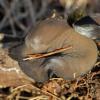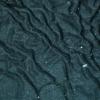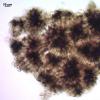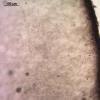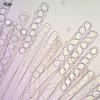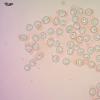
02-05-2015 17:32
Nina FilippovaHello,this beautiful species was growing on a fall

04-05-2015 08:12
Philippe LouasseBonjour, Mycologue amateur et de plus en plus int�

21-04-2015 08:00
 Blasco Rafael
Blasco Rafael
Hola tengo this Muestra Recogida sobrio tallo de g

03-05-2015 14:15
François BartholomeeusenDear all,After two months moistening a small conta

02-05-2015 22:21
 Zuzana Sochorová (Egertová)
Zuzana Sochorová (Egertová)
Hello,please, does anyone have this paper?CORNER,

02-05-2015 11:50
Peter ThompsonHello Everyone,I wonder if anyone has a key and /

30-04-2015 21:52
 Jenny Seawright
Jenny Seawright
Hello all, another query from dead Phragmites stem

29-04-2015 14:19
Hi to everybody I would know your opinion about t
Pseudoplectania melaena
Nina Filippova,
02-05-2015 17:32
this beautiful species was growing on a fallen branch of A. sibirica in coniferous forest, it appeared very early in spring after snow melt.
P. melaena seems to be synonymous with P. vogesiaca (but not in IF)?
Apothecia stipitate, disc 4 cm in diameter, stem 2 cm high, hymenium light brown with grayish, darker to the edge, outer surface black, glabrous, stem glabrous with black tomentum only at the base; two apothecia attached to fallen branch of Abies sibirica.
Excipulum from outer layer of prismatic incrusted cells, forming rossette shapes (surface view), inner layer from textura porrecta/intricata; asci cylindrical, with rooting base without crozier, 300-360 x 15-18; paraphyses cylindrical, septate, with enlarged bent to hooked upper part, with some brown incrustation in upper part, 3-4 broad in apices; spores 12.7 (11.8-13.4), round, with two hemispheric gelatinose appendages.
Hans-Otto Baral,
02-05-2015 18:39

Re : Pseudoplectania melaena
Yes, melaena is the correct name for vogesiaca.
Great how you saw the gel caps. How did you stain them., in Congo red?
Zotto
Great how you saw the gel caps. How did you stain them., in Congo red?
Zotto
Nina Filippova,
02-05-2015 18:52
Re : Pseudoplectania melaena
Right Zotto,
it is CR in water, though they are seen without the dye as well. These gel caps gradually disappear with time (in the mount), i guess dissolving in water.
it is CR in water, though they are seen without the dye as well. These gel caps gradually disappear with time (in the mount), i guess dissolving in water.
Hans-Otto Baral,
02-05-2015 19:59

Re : Pseudoplectania melaena
yes, they strongly swell by water uptake after discharge, and finally seem to disappear.
I saw collections with two and others with only one gel cap.
I saw collections with two and others with only one gel cap.
Nicolas VAN VOOREN,
04-05-2015 11:49

Re : Pseudoplectania melaena
About the "gel", see information given in this new paper http://dx.doi.org/10.5248/130.1 about a new species, Pseudoplectania lignicola

